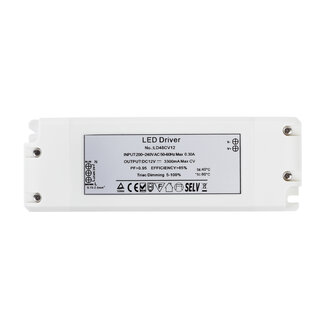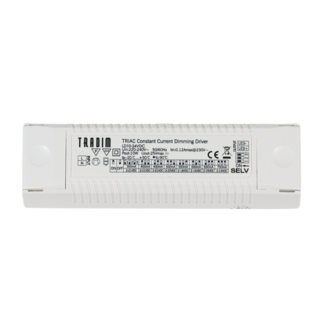What are LED drivers and how does a LED driver work?
Without getting too technical, we are going to try to explain how an LED driver works.
LED drivers are like the “power regulators” for LED lamps. They ensure that the LED bulbs get the right amount of electric current they need to burn. Compare it to a car that needs petrol to run. The LED driver is like the fuel pump that makes sure the car’s engine gets the right amount of fuel to run.
LEDs have specific electrical requirements and operate at a lower voltage than what normally comes from the wall socket. The LED driver takes the electricity from the socket and adjusts it so that it is suitable for the LED lights. It ensures that the current remains constant and protects the LEDs from being damaged by too much current.
LED drivers play a crucial role in delivering the right current and voltage to LEDs. They convert alternating current (AC) from the mains to direct current (DC) suitable for LEDs.
So, the LED driver is like a “translator” that ensures the electricity coming from the mains is converted to the right form that LED lamps need to light. This allows LED bulbs to work efficiently, reliably and last longer.
When do I need a LED driver?
An LED driver is needed when you want to use LED lights and the supply voltage of your power source does not match the required supply voltage of the LEDs. LEDs operate at low voltages and usually require a constant current for best performance.
Here are some situations where you might need an LED driver:
- Voltage difference: If the voltage of your power source is higher than the required voltage of the LEDs, an LED driver can be used to bridge the voltage difference. The LED driver will convert the higher voltage of the power source into the right voltage for the LEDs.
- Constant current control: LEDs usually need a constant current for stable operation and optimal lifetime. If your power source provides a variable current, an LED driver can be used to regulate the current and provide a constant current to the LEDs.
- Compatibility: Some LEDs have specific current and voltage requirements to work correctly. If you have LEDs with special requirements, such as high-power LEDs or RGB LED strips, an LED driver may be needed to make sure they work properly.
How do I install a LED driver?
Make sure the power is off before you start the installation. This is important for your safety and to prevent damage to the LEDs and the LED driver.
Next, connect the appropriate wires to the LED driver. There are usually three main connections: the input (power source), the output (LEDs) and ground connections if needed. Make sure the wires are securely attached and correctly connected
Next, attach the LED driver to a suitable place. This could be a wall, a panel or an enclosure, for example.
If you have any questions, please feel free to contact our customer service here.












